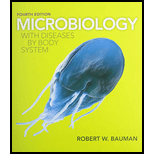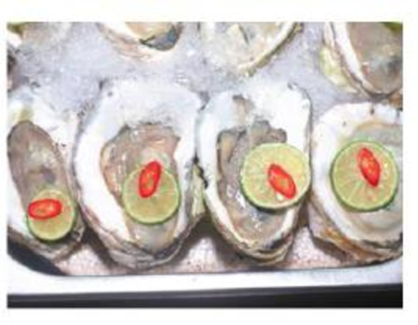
Raw Oysters and Antacids: A Deadly Mix?

The highly acidic environment of the stomach kills most bacteria before they cause disease. One bacterium that can slightly tolerate conditions as it passes through the stomach is Vibrio vulnificus—a bacterium commonly ingested by eating raw tainted oysters. The bacterium cannot be seen, tasted, or smelled in food or water.
V. vulnificus is an emerging pathogen and a growing cause of food poisoning in the United States: it triggers vomiting, diarrhea, and abdominal pain. The pathogen can also infect the bloodstream, causing life-threatening illness characterized by fever, chills, skin lesions, and deadly loss of blood pressure. About 50% of patients with bloodstream infections die. V. vulnificus especially affects the immunocompromised and people with long-term liver disease.
Researchers have discovered that taking antacids may make people more susceptible to becoming ill from V. vulnificus. They found that antacids in a simulated gastric environment significantly increased the survival rate of V. vulnificus.
- 1. Why are patients who take antacids at greater risk for infections with V vutnificus?
- 2. Will antacids raise or lower the pH of the stomach?
- 3. Other than refraining from antacids, what can people do to reduce their risk of infection?
Learn your wayIncludes step-by-step video

Chapter 2 Solutions
Microbiology with Diseases by Body System & Modified MasteringMicrobiology with Pearson eText -- ValuePack Access Card -- for Microbiology with Diseases by Body System Package
Additional Science Textbook Solutions
Organic Chemistry (8th Edition)
Physics for Scientists and Engineers: A Strategic Approach, Vol. 1 (Chs 1-21) (4th Edition)
Anatomy & Physiology (6th Edition)
Microbiology: An Introduction
Applications and Investigations in Earth Science (9th Edition)
Campbell Biology (11th Edition)
- What did the Cre-lox system used in the Kikuchi et al. 2010 heart regeneration experiment allow researchers to investigate? What was the purpose of the cmlc2 promoter? What is CreER and why was it used in this experiment? If constitutively active Cre was driven by the cmlc2 promoter, rather than an inducible CreER system, what color would you expect new cardiomyocytes in the regenerated area to be no matter what? Why?arrow_forwardWhat kind of organ size regulation is occurring when you graft multiple organs into a mouse and the graft weight stays the same?arrow_forwardWhat is the concept "calories consumed must equal calories burned" in regrads to nutrition?arrow_forward
- You intend to insert patched dominant negative DNA into the left half of the neural tube of a chick. 1) Which side of the neural tube would you put the positive electrode to ensure that the DNA ends up on the left side? 2) What would be the internal (within the embryo) control for this experiment? 3) How can you be sure that the electroporation method itself is not impacting the embryo? 4) What would you do to ensure that the electroporation is working? How can you tell?arrow_forwardDescribe a method to document the diffusion path and gradient of Sonic Hedgehog through the chicken embryo. If modifying the protein, what is one thing you have to consider in regards to maintaining the protein’s function?arrow_forwardThe following table is from Kumar et. al. Highly Selective Dopamine D3 Receptor (DR) Antagonists and Partial Agonists Based on Eticlopride and the D3R Crystal Structure: New Leads for Opioid Dependence Treatment. J. Med Chem 2016.arrow_forward
- The following figure is from Caterina et al. The capsaicin receptor: a heat activated ion channel in the pain pathway. Nature, 1997. Black boxes indicate capsaicin, white circles indicate resinferatoxin. You are a chef in a fancy new science-themed restaurant. You have a recipe that calls for 1 teaspoon of resinferatoxin, but you feel uncomfortable serving foods with "toxins" in them. How much capsaicin could you substitute instead?arrow_forwardWhat protein is necessary for packaging acetylcholine into synaptic vesicles?arrow_forward1. Match each vocabulary term to its best descriptor A. affinity B. efficacy C. inert D. mimic E. how drugs move through body F. how drugs bind Kd Bmax Agonist Antagonist Pharmacokinetics Pharmacodynamicsarrow_forward
 Human Heredity: Principles and Issues (MindTap Co...BiologyISBN:9781305251052Author:Michael CummingsPublisher:Cengage Learning
Human Heredity: Principles and Issues (MindTap Co...BiologyISBN:9781305251052Author:Michael CummingsPublisher:Cengage Learning





